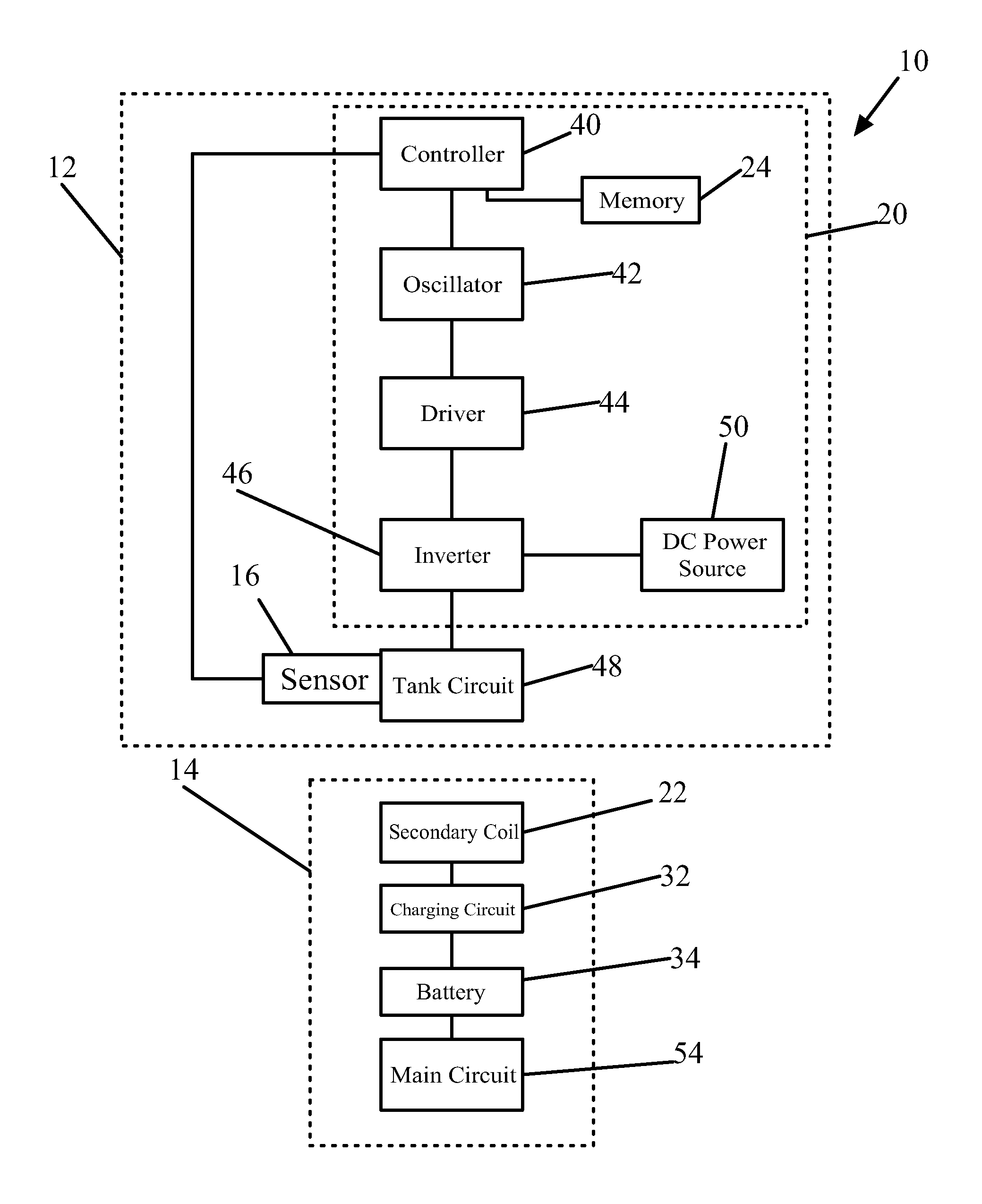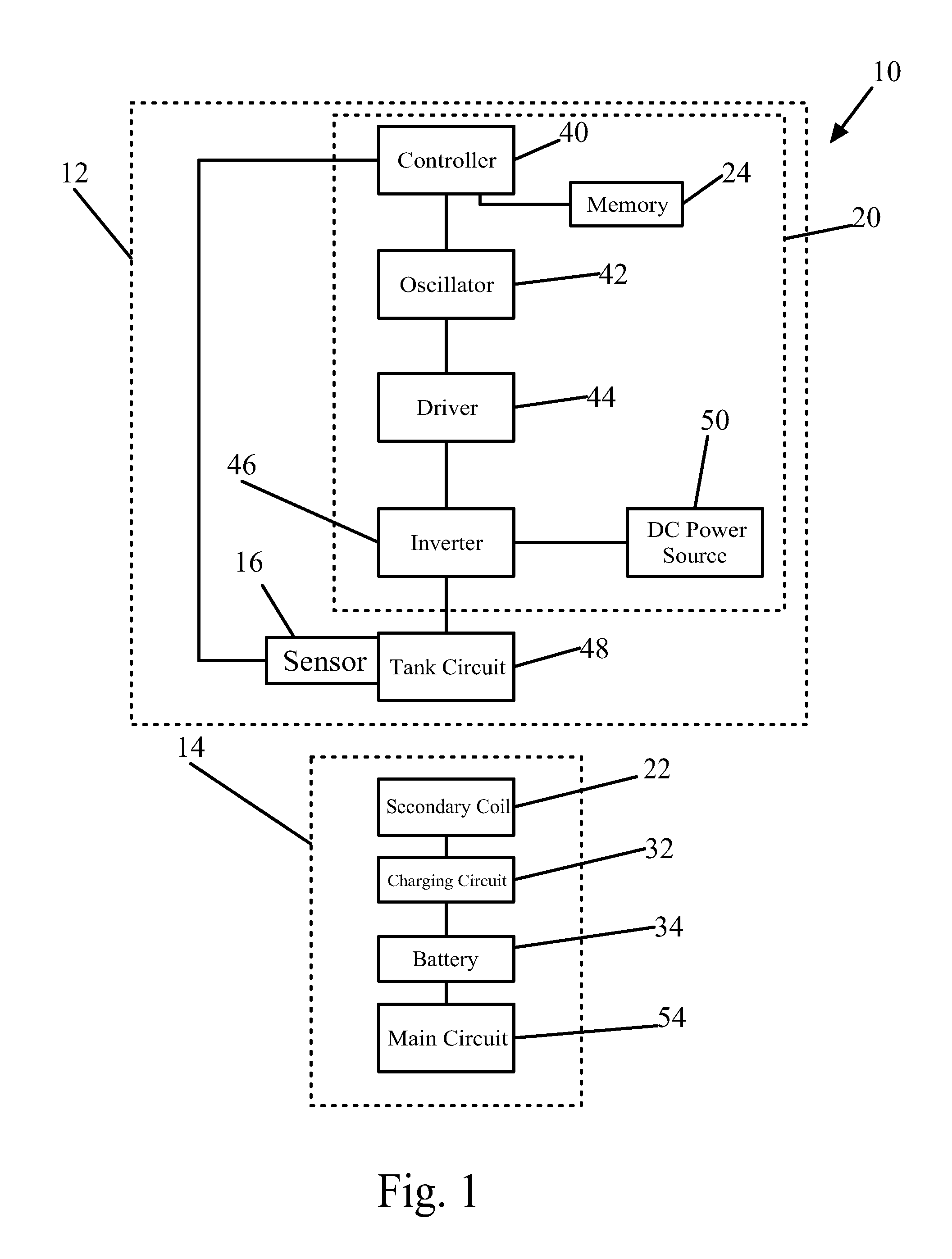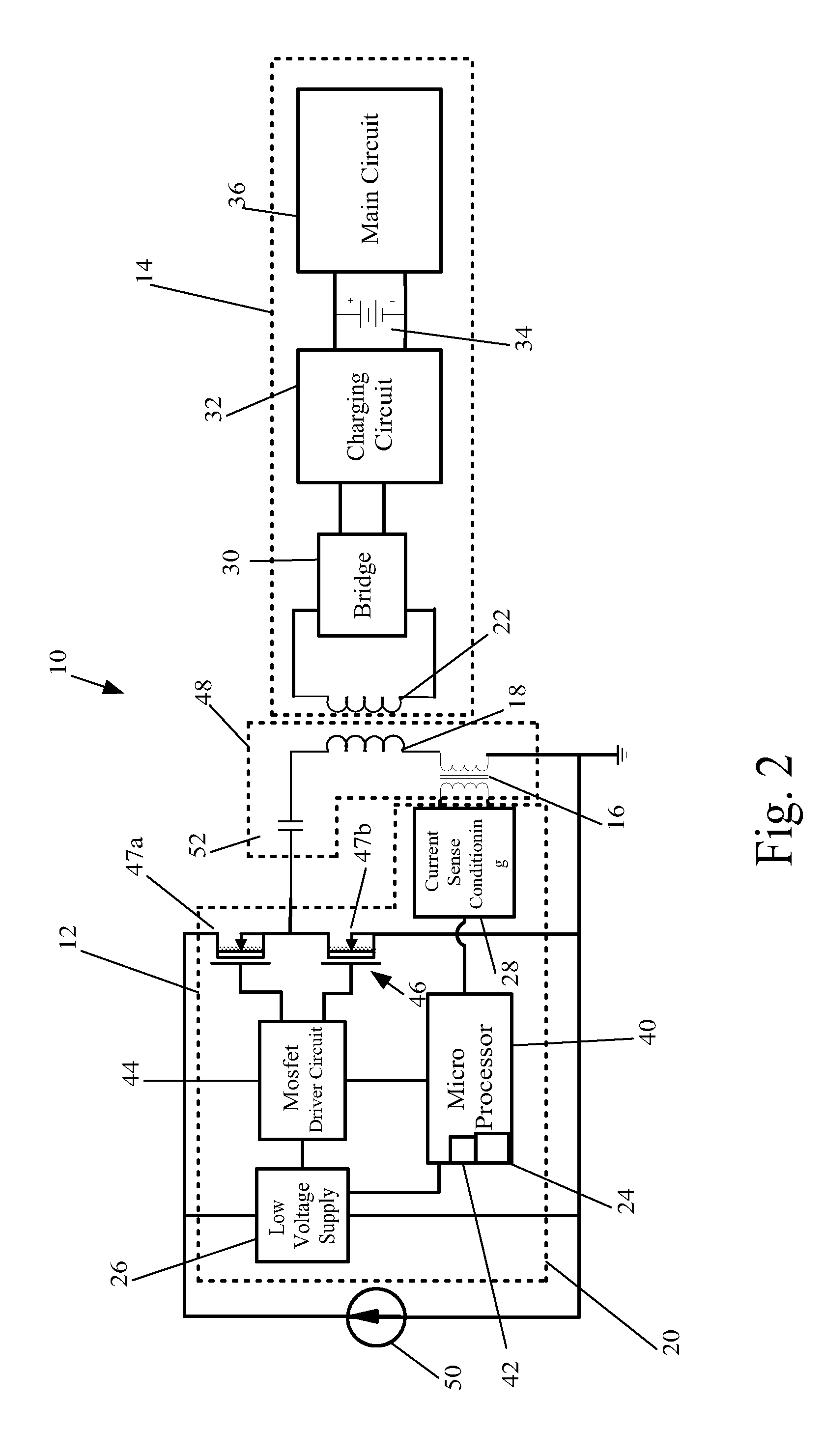Inductive power supply with device identification
a technology of inductive power supply and device identification, which is applied in the direction of power supply testing, electrical apparatus construction details, inductance, etc., can solve the problems of complicated problems and limited success of conventional systems, and achieve the effect of simple and effective methods and apparatuses, efficient powering the remote device, and readily identifying fault conditions
- Summary
- Abstract
- Description
- Claims
- Application Information
AI Technical Summary
Benefits of technology
Problems solved by technology
Method used
Image
Examples
Embodiment Construction
[0024]An inductive power supply system in accordance with an embodiment of the present invention is shown in FIG. 1. The inductive power supply system 10 generally includes an adaptive inductive power supply (“AIPS”) 12 and one of a plurality of remote devices 14. The AIPS 12 generally includes a tank circuit 48 with a primary coil 18 (See FIG. 2) capable of inductively transmitting power. The AIPS also includes a controller 20 for selectively controlling the frequency at which power is generated by the primary coil 18, and a sensor 16 capable of sensing reflected impedance from a remote device 14. The AIPS 12 is intended for use with one or more remote devices 14, each of which has a unique resonant frequency or unique pattern of resonant frequencies. In operation, the AIPS 12 applies power to the primary 18 at an identification frequency and then evaluates the reflected impendence of the remote device 14 using the current sensor 16. If the remote device 14 has a resonant frequency...
PUM
 Login to View More
Login to View More Abstract
Description
Claims
Application Information
 Login to View More
Login to View More - R&D
- Intellectual Property
- Life Sciences
- Materials
- Tech Scout
- Unparalleled Data Quality
- Higher Quality Content
- 60% Fewer Hallucinations
Browse by: Latest US Patents, China's latest patents, Technical Efficacy Thesaurus, Application Domain, Technology Topic, Popular Technical Reports.
© 2025 PatSnap. All rights reserved.Legal|Privacy policy|Modern Slavery Act Transparency Statement|Sitemap|About US| Contact US: help@patsnap.com



